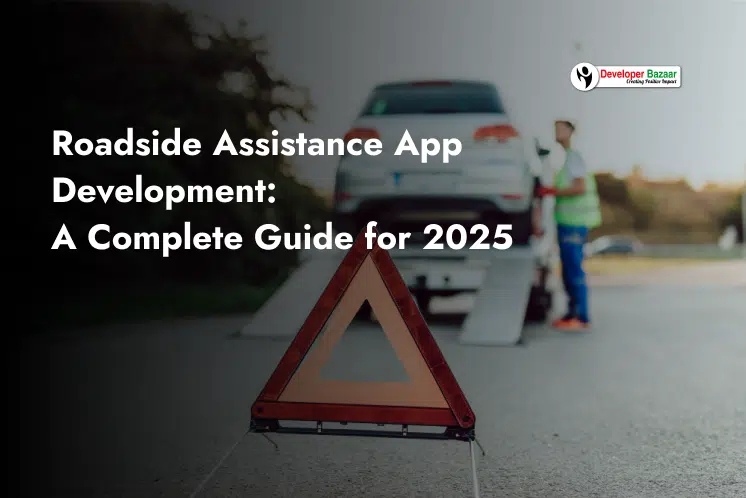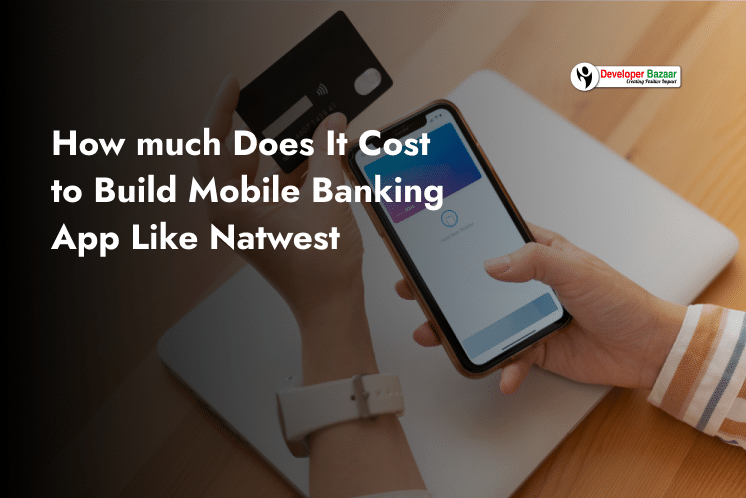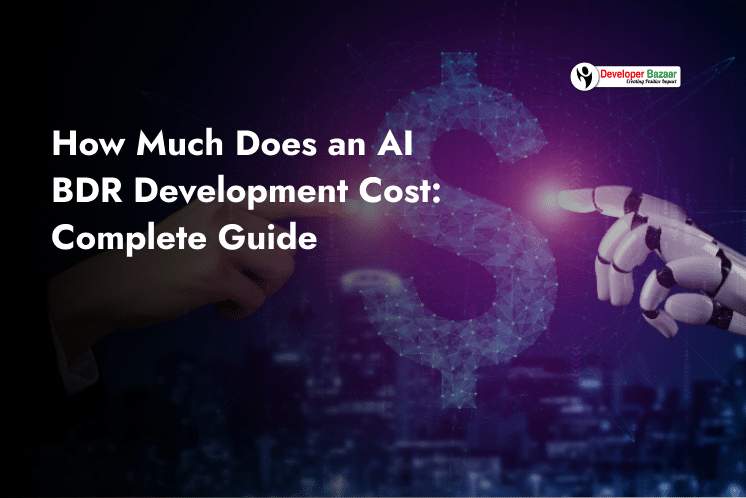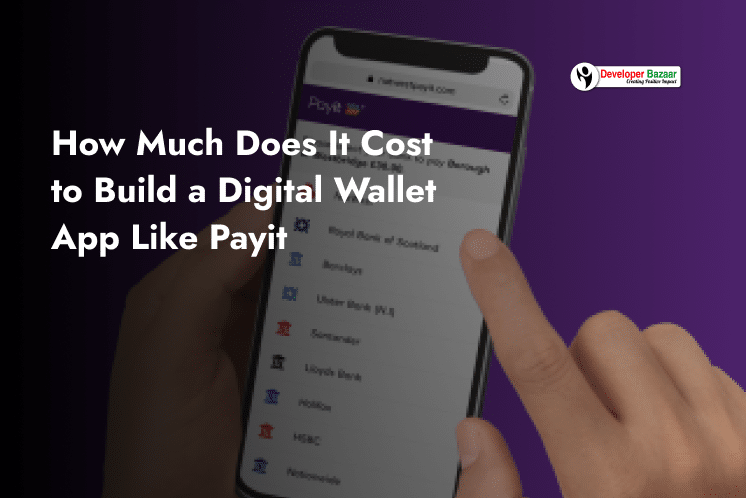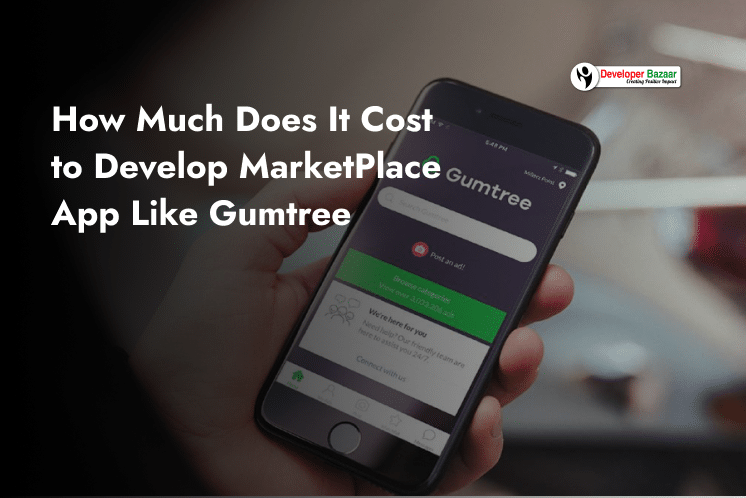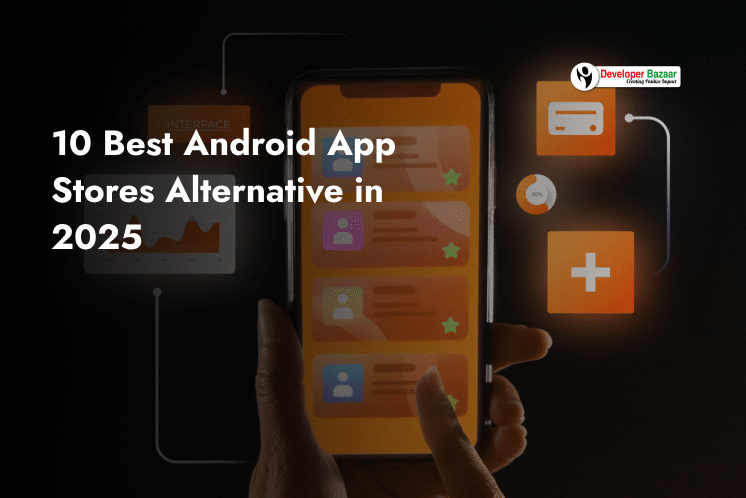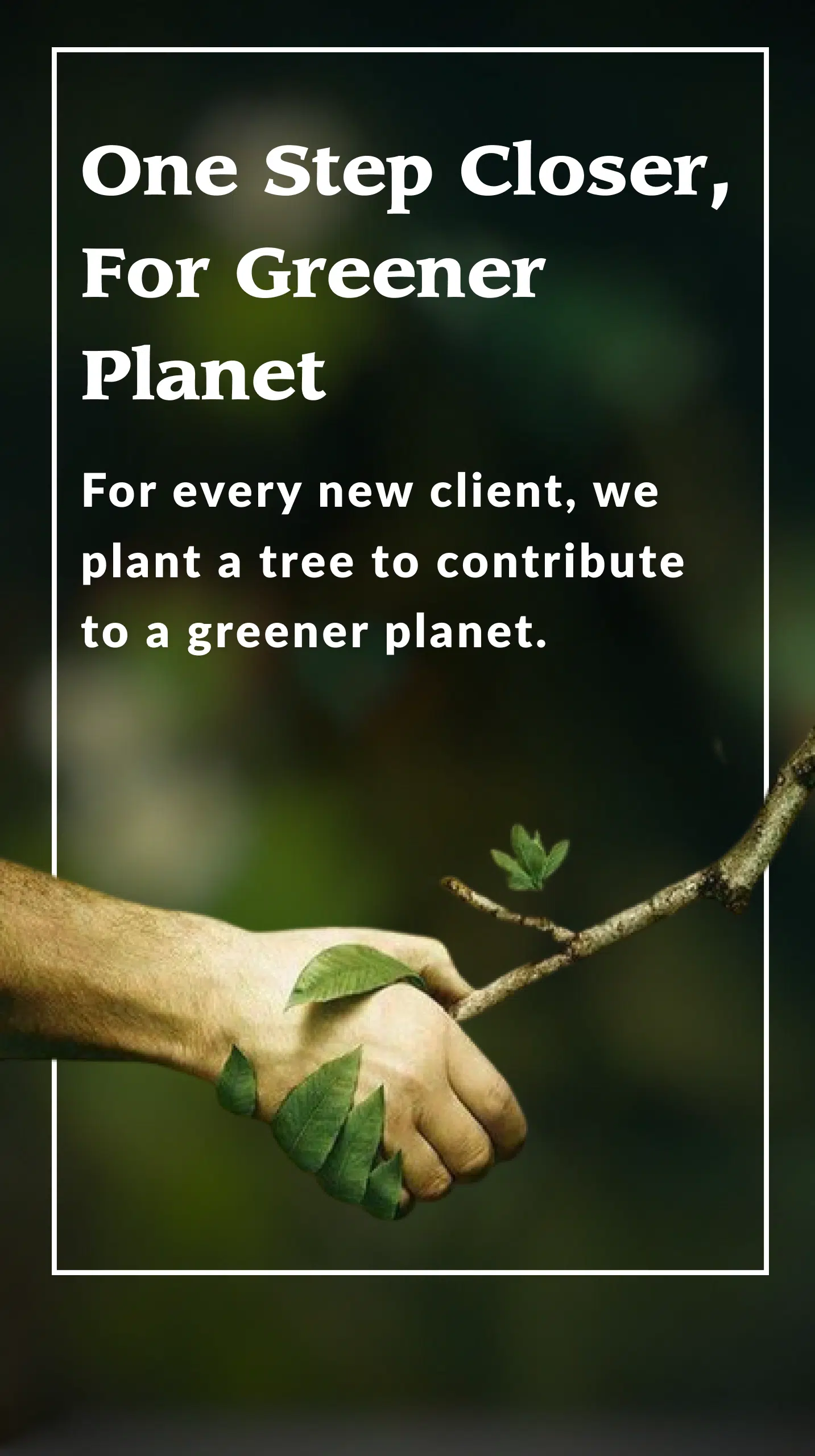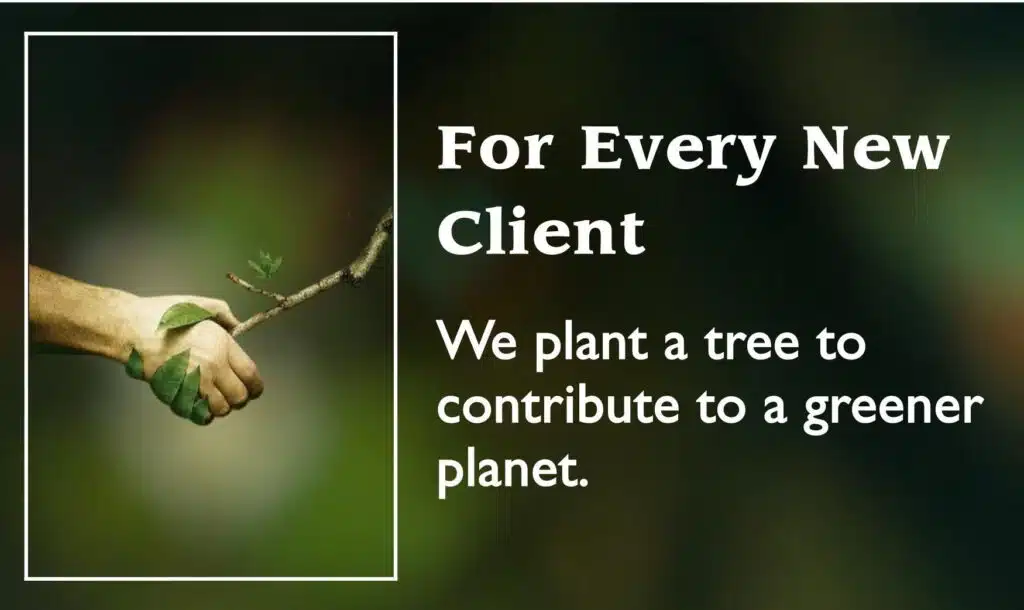Table of Contents
ToggleOnline dating apps, like Tinder, have significantly changed the social interaction landscape in the current technological age. With its straightforward swipe-based matching system, Tinder, which debuted in 2012, completely changed the dating scene. With its creative approach to online dating, Tinder attracted a large user base very quickly, becoming one of the most well-known and prosperous dating apps worldwide.
Many business owners and developers are excited to create similar apps in an attempt to take advantage of the successful online dating industry, having been inspired by its success.
Still, one of the first queries in this try is: how much does the development of an app like Tinder cost?
The process of creating an app that functions similarly to Tinder is complicated and multidimensional, involving a number of steps and factors that add to the final cost. Every stage, from the initial planning and market research to the design, development, and post-launch maintenance, calls for significant thought and cash investment.
The complexity of the app, the features and functionalities it contains, the technology stack it uses, and the location of the development team are just a few of the factors that can cause the costs to change significantly.
We will examine these expenses in-depth in this blog, providing insights into every stage of the development process. Knowing what they are will help in determining the necessary cost as well as informing decisions that can reduce the app’s development and guarantee its success.
This post will provide helpful information on the price of developing an app like Tinder, no matter whether you are a startup trying to break into the dating app market or an established business trying to increase your online presence.
Why Consider Developing a Tinder-Like App?

It’s important to understand the potential benefits and market dynamics that makecreating an app like Tinder a good idea before we break down the costs. Over the past 10 years, the online dating sector has experienced exponential growth due to shifting social norms surrounding online dating and increasing smartphone access. Market research estimates that the global online dating market was worth $6.7 billion in 2020 and will increase at a compound annual growth rate (CAGR) of 7.4% between 2021 and 2028.
Tinder’s business strategy, which offers both premium and free features, has shown to be very successful. Significant income has been made by the app’s monetization techniques, which include advertising, in-app purchases like Boosts and Super Likes, and subscriptions to Tinder Plus and Tinder Gold. For similar apps, this profitable model shows that there is room for significant return on investment.
How Much Does Tinder-like Dating App Development Cost?
To give you a rough estimate, developing an app like Tinder can cost anywhere from $20,000 to $80,000. The total cost depends on various factors, such as the app’s complexity, the features included, the developers’ hourly rates, and the location of the dating app development company.
Summarizing the Tinder-Like Dating App Development Cost
| App Type | Estimated Cost | Time Frame |
|---|---|---|
| Simple | $15,000 to $80,000 | 3 Months |
| Medium Complex | $80,000 to $100,000 | 3 to 6 Months |
| Most Complex | $120,000+ | 6+ Months |
However, these are very rough estimates. To get a more accurate idea of how much it costs to create a dating app like Tinder, you need to understand the factors that affect the overall cost. By looking into these details, you can make better budgetary decisions, which can lead to a guaranteed return on investment (ROI).
Let’s take a closer look at what makes Tinder different from its competitors before looking into the different aspects that affect the price of creating a dating app.
What Makes Tinder Stand Apart from Other Dating Apps?
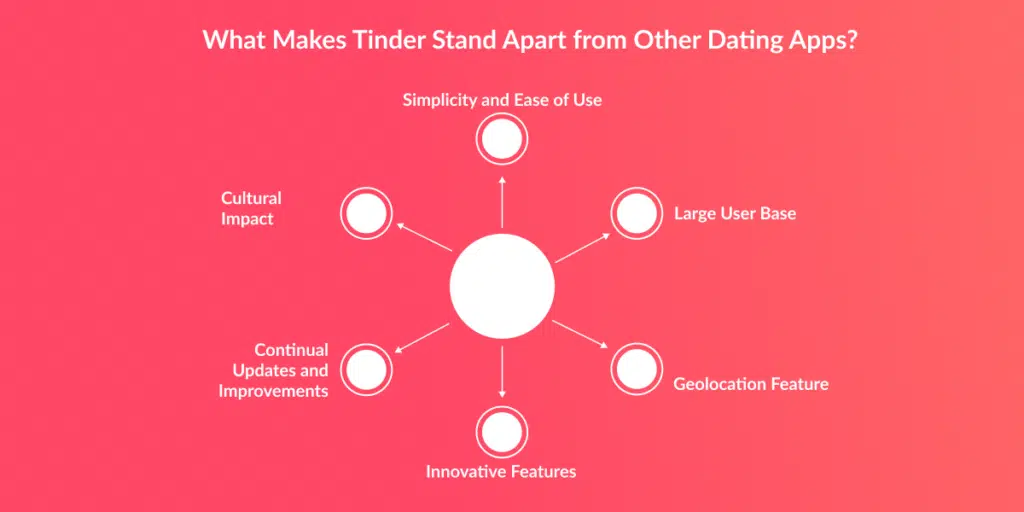
With a few unique characteristics and innovations, Tinder is successfully carving out a unique niche for itself in the crowded dating app market. These include:
Simplicity and Ease of Use:
- Swipe Mechanism: The swipe left to “pass” and swipe right to “like” interface was made popular by Tinder, which also made it extremely attractive and user-friendly.
- Minimalistic Design: The app’s simple, easy design makes sure users can navigate it easily and without extra effort.
Large User Base:
- Global Reach: With one of the biggest and largest user bases globally, Tinder increases the chances of finding a match across a range of geographies and cultural backgrounds.
- Broad Demographic Appeal: Tinder was designed with younger users in mind, but its popularity has grown to include a larger age range.
Geolocation Feature:
- Proximity Matching: Tinder matches users within a certain distance using geolocation, which makes in-person meetings easy and quick.
- Travel Mode: By using this feature, users can increase their dating opportunities by connecting with people in different cities before they travel there.
Innovative Features:
- Super Like: A feature that lets users show a higher level of interest, setting them apart from regular likes.
- Boosts and Super Boosts: Paid features that increase a user’s profile visibility for a limited time, enhancing the chances of getting matches.
- Tinder U: A feature designed with college students in mind that lets them interact with friends from both their own institution and other nearby schools.
Continual Updates and Improvements:
- Evolving Algorithms: To increase the importance of matches, Tinder updates its matching algorithms on a regular basis.
- New Functionalities: To maintain a dynamic and interesting user experience, new features are frequently added, such as video profiles and in-app events.
Cultural Impact:
- Mainstream Popularity: Tinder has become a synonym for modern dating culture, frequently coming up in discussions about online dating and the media.
- Social Acceptance: The fear attached to meeting people online has decreased thanks in large part to the app, which has helped normalise online dating.
These features set Tinder apart from other apps in the dating app market and make it more than just a dating app. They also make it a major player in the world of social interactions and connections.
Exploring Tinder’s Swipe-Right Feature: Seeking a Right Match

One of the key features of Tinder is its swipe-right functionality, which makes it easier to show interest in a possible match. In addition to completely changing the way people view online dating, this feature also brought in a game-like interaction model that has had a big impact on user behaviour and the dynamics of relationships formed online.
The Mechanics of Swiping Right
On Tinder, swiping right on a profile indicates interest in another user’s information. When two users swipe right on each other’s profiles, a match is made, enabling the users to start communication. The confusion usually connected to traditional dating techniques is removed by this simple decision-making process.
Psychological Aspects
The swipe-right function makes use of gamification and other psychological concepts like instant satisfaction. When a user receives a match, they get a feeling of dopamine, which is similar to the reward systems in video games and social media. In the hopes of finding more matches, this keeps users interested and motivates them to keep swiping.
Impact on User Behavior
Casual dating and hookups have increased as a result of how easy and quick it is to swipe right, since it lets users express interest without taking too long to verify someone. But since choices are frequently made purely on the basis of profile photos and clear bios, this has also given reason for concerns about superficiality.
Algorithms and Matchmaking
When presenting possible matches, Tinder’s algorithm considers a number of factors, including user preferences, location, and activity. The algorithm refines the match suggestions the more a user swipes, the more it learns about their preferences. The goal of this dynamic interaction between user behaviour and the algorithm is to increase the chance of a match going well.
Challenges and Criticisms
Furthermore, placing too much focus on outward appearance could reinforce stereotypes and keep out users who may be less attractive but have charming attitudes.
Future of Swiping Right
Online dating has been changed by Tinder’s swipe-right feature, which makes it more approachable and interesting. Even with its shortcomings, the feature certainly had an impact on dating culture, and further advancements may help find a balance between practicality and deep connections.
How Tinder Works – Algorithm Behind the Tinder App
Tinder moved to a more advanced algorithm over time, highlighting machine learning to improve user experience. It now provides more individualized match recommendations by taking user behavior patterns, preferences, and location into consideration. In order to determine compatibility, the app also uses information from users’ profiles, including age, interests, and photos. The algorithm is influenced by right and left swipe activity, which helps to fine-tune match recommendations and shows user preferences.
Furthermore, Tinder gives priority to users who are active and have recently been online, so the profiles that are displayed are likely active. To increase the likelihood of meaningful connections, decrease fake profiles, and improve matchmaking efficiency, the algorithm is updated and improved on a regular basis. All things considered, Tinder’s algorithm blends behavioral data, user input, and ongoing learning to produce a dynamic and tailored matchmaking experience.
Factors that Affect Tinder-Like Dating App Costs – Features, Tech Stack & More

Feature Set:
- Basic features: User profiles, swiping, matches, messaging.
- Advanced features: Geolocation, push notifications, advanced matching algorithms, video calling, social media integration.
- Additional features: In-app purchases, advertising, premium subscriptions, AI-based recommendations.
Tech Stack:
- Frontend: Native (iOS, Android), Hybrid (Flutter), Web (React.js).
- Backend: Node.js for robust backend functionality.
- Database: SQL (MySQL, PostgreSQL), NoSQL (MongoDB, Firebase Firestore).
Design Complexity:
- UI/UX design: Simple and intuitive vs. complex and customized.
- Graphics and animations: Basic vs. advanced animations and graphics.
- Responsive design: Compatibility across various devices and screen sizes.
Development Team:
- In-house vs. Outsourced: Cost varies depending on hiring in-house developers or outsourcing to agencies or freelancers.
- Skill level: Experienced vs. junior dating app developers, specialists in mobile app development, UI/UX design, backend development.
Security and Compliance:
- Data protection: Compliance with GDPR, CCPA, and other data protection regulations.
- Authentication and authorization: Secure login methods, data encryption, secure API endpoints.
- Regular updates and maintenance: Costs for ongoing security updates and bug fixes.
Scalability:
- Expected user base: Scalability requirements based on projected user growth.
- Cloud infrastructure: Costs for scaling up server resources based on demand.
- Load testing: Ensuring the app can handle increased traffic without downtime.
Marketing and User Acquisition:
- User acquisition strategy: Costs for advertising, social media marketing, influencer partnerships.
- App store optimization (ASO): Investment in optimizing app store listings for better visibility.
- Retention strategies: Costs for implementing features to retain users and reduce churn.
Regulatory Requirements:
- Location-specific regulations: Compliance costs for different regions and countries.
- Age verification: Implementing age verification mechanisms to comply with legal requirements.
- Content moderation: Costs for implementing content moderation tools to ensure compliance with community guidelines and regulations.
You can calculate the expenses of creating and managing a dating app that is similar to Tinder and that is appropriate for your target market and unique set of needs by taking these factors into account.
Time Frame for Tinder-Like Dating App Development
| Stage | Description | Time Frame |
|---|---|---|
| Research & Planning | Conduct market research, define target audience, outline features, create project roadmap, and establish technical requirements. | 2-4 weeks |
| UI/UX Design | Design user interface (UI) elements, wireframes, and user experience (UX) flows. Modify designs based on feedback. | 4-8 weeks |
| Frontend Development | Develop the client-side of the application, including user interface components, navigation, and interactions. | 8-12 weeks |
| Backend Development | Build the server-side infrastructure, including user authentication, data storage, and algorithm development for matching algorithms. | 10-16 weeks |
| Testing & QA | Conduct thorough testing of both frontend and backend components, including functional testing, usability testing, and performance testing. Address any bugs or issues discovered. | 4-6 weeks |
| Deployment & Launch | Prepare the application for deployment, set up hosting infrastructure, and deploy the app to production servers. Promote the app through marketing channels and launch it to the public. | 2-4 weeks |
| Post-launch Support | Provide ongoing maintenance, monitoring, and updates to ensure the app’s stability, security, and performance. Address user feedback and implement feature enhancements as needed. | Ongoing |
How to Create a Dating App Like Tinder?
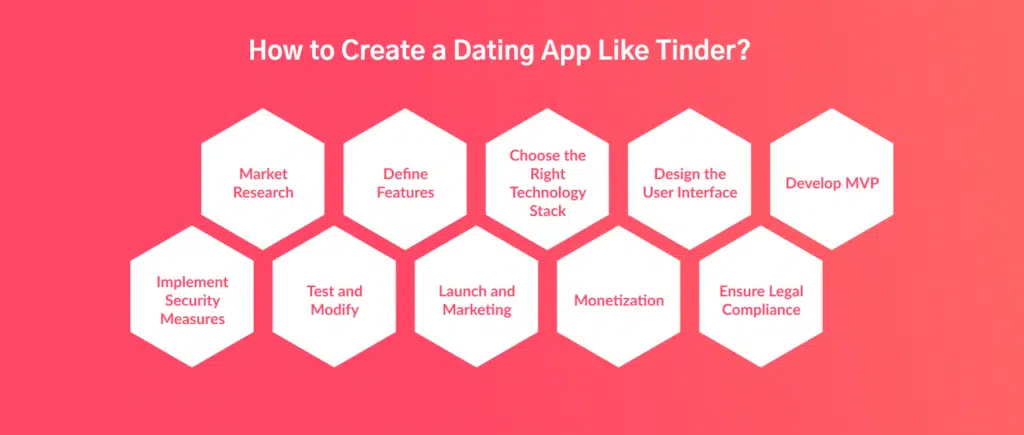
1. Market Research:
- Understand the target audience and their preferences.
- Analyze competitors to identify strengths, weaknesses, and opportunities.
2. Define Features:
- User registration: Allow users to sign up using email, phone number, or social media accounts.
- Profile creation: Include options for users to add photos, bio, interests, etc.
- Geolocation: Implement GPS to suggest matches based on nearby.
- Swiping: Integrate the swipe feature for users to like or dislike profiles.
- Matching algorithm: Develop a smart algorithm to suggest potential matches based on preferences.
- Messaging: Enable users to communicate once they’ve matched.
- Push notifications: Keep users engaged with timely updates on matches and messages.
- In-app purchases: Offer premium features like boost visibility, super likes, or ad removal for monetization.
3. Choose the Right Technology Stack:
- Frontend: Utilized Flutter for mobile application development.
- Backend: Use technologies like Node.js for scalable backend development.
- Database: Opt for databases like MongoDB or PostgreSQL for efficient data storage.
4. Design the User Interface:
- Keep the design simple, intuitive, and visually appealing.
- Focus on creating a seamless user experience for easy navigation.
- Ensure responsiveness across various devices and screen sizes.
5. Develop MVP (Minimum Viable Product):
- Start with essential features to test the market and gather user feedback.
- Prioritize features based on user demands and market trends.
6. Implement Security Measures:
- Secure user data with encryption techniques.
- Implement measures to prevent fake profiles and ensure user safety.
7. Test and Modify:
- Conduct thorough testing to identify and fix bugs.
- Gather feedback from beta testers to improve user experience.
- Modify based on feedback to enhance app functionality and usability.
8. Launch and Marketing:
- Launch the app on popular app stores like Google Play Store and Apple App Store.
- Implement marketing strategies like social media campaigns, influencer partnerships, and app store optimization (ASO) to increase visibility.
- Continuously monitor user feedback and app performance to make necessary updates and improvements.
9. Monetization:
- Offer premium subscriptions with additional features for revenue generation.
- Integrate in-app advertisements or sponsorships.
- Collaborate with local businesses for promotional tie-ups.
10. Ensure Legal Compliance:
- Familiarize yourself with data protection laws like GDPR (General Data Protection Regulation) and ensure compliance.
- Draft and implement terms of service and privacy policies to protect both users and the app.
Careful planning, in-depth research, and constant modification based on user feedback and market trends are necessary when developing a dating app similar to Tinder. You can create a successful dating app that meets the demands of your target market and offers a safe and easy user experience by following these steps
How to Monetize from Tinder-like App Development?
If you plan well, monetizing an app like Tinder can be very profitable. Here are some ideas for making money with your app:
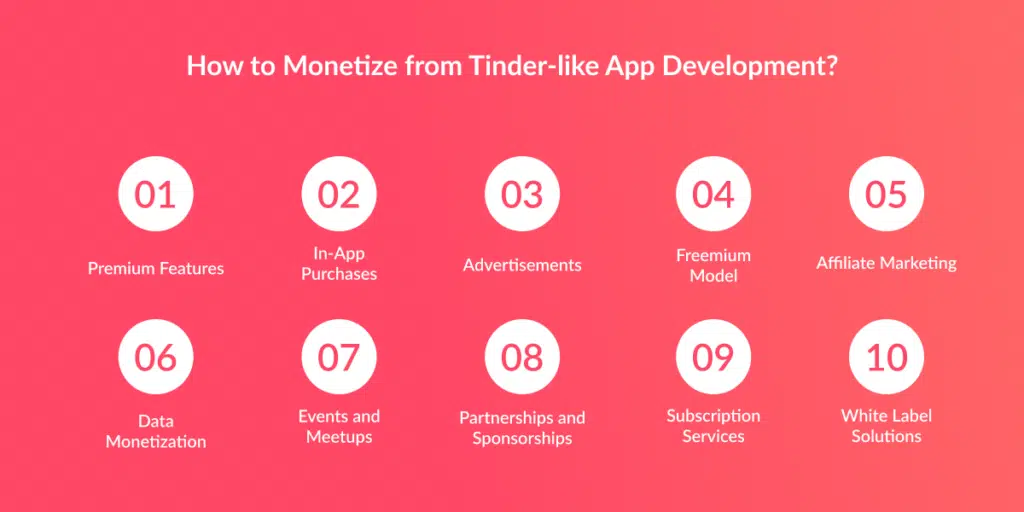
Premium Features:
Provide subscriptions or premium features that unlock more features. This could be being able to view who has liked your profile, have infinite swipes, or have advanced search filters.
In-App Purchases:
Include in-app purchases of virtual currency or goods. In order to become more visible, users can buy boosts. They can also buy virtual gifts to give to other users.
Advertisements:
Include personalised advertisements in the application. To reach your user base, advertisers may choose to purchase sponsored profiles, promoted placements, or banner ads.
Freemium Model:
Provide a limited-functionality, basic-featured free version of the app. Next, provide customers the choice to subscribe or pay a one-time fee to upgrade to a premium version.
Affiliate Marketing:
Join forces with companies that target singles, like restaurants, pubs, or clothing labels. By using affiliate links to recommend their goods or services to your users, you can get paid commissions.
Data Monetization:
Analyse user data to offer advertisers or marketers insights or customised suggestions (all the while maintaining privacy and security). Give users control over their privacy settings and be open and honest about how their data is used.
Events and Meetups:
Plan social gatherings, speed dating events, or offline events for your users. Set a price for event tickets or collaborate with venues to generate income from the sale of tickets or venue sponsorships.
Partnerships and Sponsorships:
Work together to create partnerships and sponsorships with other companies or brands. This might involve running collaborative promotions, showcasing sponsored profiles or content, or incorporating branded experiences into your app
Subscription Services:
Provide specialised subscription services on the app, like matchmaking, profile optimisation, and dating coaching.
White Label Solutions:
It’s important to keep your target market, industry trends, and competitors in mind when choosing which monetization techniques to use. To promote retention and ongoing app engagement, give equal weight to giving your users value and maintaining a pleasant user experience.
How can Developer Bazaar Technologies help you with dating app development?
Developer Bazaar Technologies provides a full range of services for creating dating apps that are customised to fit your unique requirements. Our best dating app developers specialises in creating interactive and natural platforms that encourage deep connections. We work together closely with you to make sure your vision is realised at every stage, from conception to deployment and beyond.
Our in-depth knowledge of the dating app market is one of the main benefits of working with Developer Bazaar Technologies. We keep up with the newest developments in technology and trends to make sure your app stands out in a crowded market. We have the skills to customize your app to your target market, whether you’re going for a mass appeal or a focused audience.
Additionally, you will be kept informed and involved throughout our highly collaborative development process through frequent checkpoints and feedback sessions. Because openness and communication are important to us, you can be confident that your project is in excellent hands.
Developer Bazaar Technologies provides technical know-how along with strategic advice to help you make the most out of your dating app. We use our expertise in the industry to help you in reaching your objectives, whether they involve monetization strategies or user acquisition tactics.
Get a feature-rich Tinder clone app that can make a difference by getting in touch with our team of top dating app developers right now.
FAQs
Q. How much does it cost to create a dating app like Tinder?
Creating a dating app like Tinder can cost $20,000 to $80,000. The feature set, complexity of the app, UI/UX design, location, and hourly rate all affect how much an app costs.
Q. How to make an app like Tinder?
Before you start making a dating app like Tinder, think about what makes your app unique. Once you’ve got that down, figure out how you’re going to run your business and who’s going to help you build it. Then, instead of making the whole app at once, start with a simpler version called an MVP. This lets you get feedback from users to make your app even better later on.
Q. How to make a dating app like Tinder profitable?
So, to make a dating app like Tinder profitable, you can offer different subscription options for users to pick from. On top of that, you can make money by letting users buy things within the app, showing ads that fit naturally, and offering special premium plans. If you want more info, you can talk to our experts who know all about it.
Q. Which is the best online dating app development company?
People trust them because they’ve done a great job on lots of projects before. So, if you want to make a dating app, they’re the ones to go to!
Q. What are the features of Tinder app development?
For a seamless experience, Tinder also includes features like messaging, profile customisation, and integration with social media sites. User safety is given top priority by the app’s strong security features, which include account verification and privacy settings. Last but not least, Tinder’s ongoing innovations and updates maintain its current status and user attraction, supporting its standing as the industry’s top dating app.






